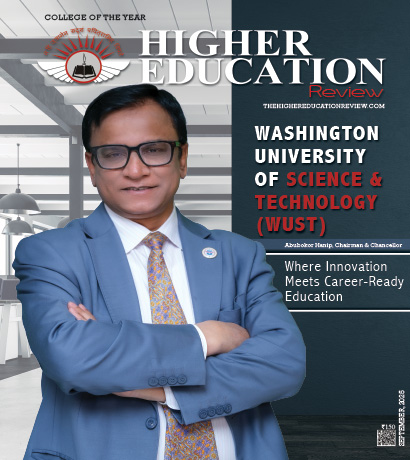How Higher Education is Shaping Economially Sustainable Cities
 Education for sustainable development (ESD) gives learners of all ages the knowledge, skills, values and agency to address interconnected global challenges including climate change, loss of biodiversity, unsustainable use of resources, and inequality. It empowers learners of all ages to make informed decisions and take individual and collective action to change society and care for the planet. ESD is a lifelong learning process and an integral part of quality education. It enhances the cognitive, socio-emotional and behavioural dimensions of learning and encompasses learning So, Let us now look at how higher education shapes economically sustainable cities.
Education for sustainable development (ESD) gives learners of all ages the knowledge, skills, values and agency to address interconnected global challenges including climate change, loss of biodiversity, unsustainable use of resources, and inequality. It empowers learners of all ages to make informed decisions and take individual and collective action to change society and care for the planet. ESD is a lifelong learning process and an integral part of quality education. It enhances the cognitive, socio-emotional and behavioural dimensions of learning and encompasses learning So, Let us now look at how higher education shapes economically sustainable cities.
Timeless aesthetics, Socio-cultural appropriateness, Environmental sustainability, Economic affordability and Sufficiency of strength and performance have to be the holistic demands of design and design education has to prepare professional that can comprehensively contextualise the same for the given milieu of the place, people and the programme. To positively influence the quality of life and rendering the world, humane, plural and sustainable. Says Yatin Pandya, Founder, Footprints E.A.R.T.H.
Epicenters of Innovation: Exploring Innovation Hubs and Knowledge Clusters
Universities act as catalysts for innovation, thus converting cities into knowledge and innovation hubs. Cities with renowned universities are influenced by the productivity of a cluster of innovative firms and industries, which play a crucial role in economic prosperity. Silicon Valley in the San Francisco Bay Area is a perfect example of how higher education can foster innovation and drive economic growth.
Stanford University is one of the major players behind regional success. The university continually produces highly talented graduates and promotes entrepreneurship and research culture. Several technology companies, such as Google, Hewlett-Packard, and Cisco Systems, have emerged from the collaboration between academia and industry.
Moreover, the proximity between firms and universities encourages idea generation and talent flow, leading to a vibrant ecosystem that attracts local and international investments. This effect creates jobs and enhances the city’s global competitiveness in technology and innovation.
“Higher education must move towards a sustained competency-building model. Employability and generative ideas are intimately linked to understanding the manner in which marketable competencies need to be embedded in every institution's initiative towards teaching, learning and research processes. As government and private colleges co-exist, there is ample scope for innovation, evolution in accordance with global standards and increased focus on original thought contribution. “says Dr. J C Wandemberg and Dr. Agna Fernandez, Dean and Assistant Professor, Woxsen Business School.
Strategies for Aligning Workforce Development with Economic Resilience
Higher education institutions have an essential role in shaping the future workforce. Cities with good universities are more likely to adjust quickly and effectively, considering that global economic needs keep changing, hence becoming more resilient. The case in point is Boston City, which houses several reputable universities such as Harvard University and Massachusetts Institute of Technology (MIT).
Boston has been established as a hub for learning, discovery and innovation through these institutions. The city’s focus on higher education has resulted in a highly skilled labour force, especially in areas like biotechnology, healthcare and finance. This skillful human capital attracts leading firms into the town simultaneously, enabling existing ones to survive even during challenging economic times.
When an economy suffers a downturn, cities benefit from having educated employees who can better respond to uncertainty. Moreover, our employees have diverse skills and knowledge that help us adapt quickly to new industries and technologies. Indeed, it is partly due to continued investments in higher education plus a talent pool that keeps strengthening the city and its economic engine, thus making it possible for Boston to cope with economic storms while retaining a solid job market.
Collaborative Approaches to Urban Renewal and Community Engagement
Action, but they also attract businesses and create jobs for their residents. According to the U.S. Census Bureau, cities with higher education institutions have lower unemployment rates and higher median incomes than those without such institutions.
Furthermore, universities promote cultural diversity and social integration. Students from different backgrounds come together to learn and interact with one another. This exchange of ideas fosters tolerance and understanding among individuals of other races, religions, ethnicities or socioeconomic status.
In conclusion, institutions of higher learning should be regarded as more than just centers for knowledge acquisition by students; they are vital contributors towards economic development efforts within their respective localities. High-level research activities undertaken by scholars, alongside other academic pursuits, serve as a source of income generation for local economies while providing appropriate solutions that help address specific challenges these communities face.

